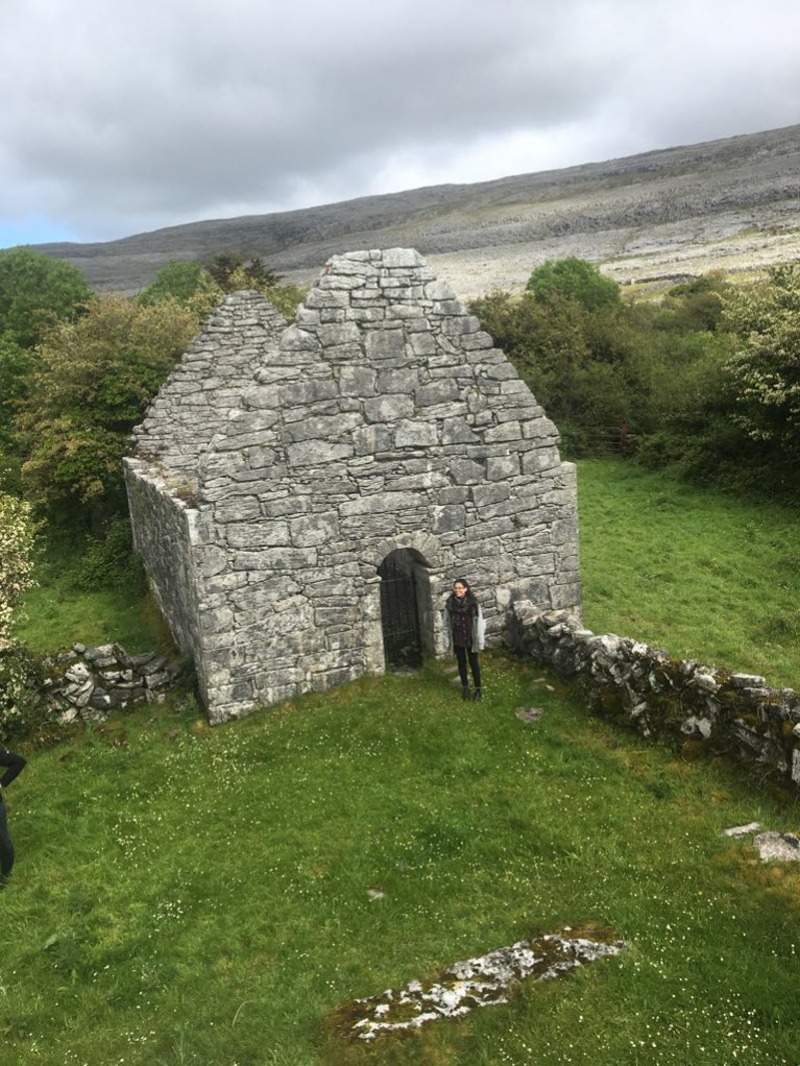Graduate Student Travel Diary: Corinne Graffin experiences medieval watermills

Corinne Graffin describes what she learned about medieval mills by visiting archeological and historical sites in Ireland:
“In May 2019, I travelled to several locations in Ireland, using funding provided by the Faculty of Humanities and Social Sciences’ Scholarship in the Arts program and by the SSHRC-funded project ‘Urbanization and the Environment in Medieval Europe,’ to conduct research for my Masters Major Research Paper on early medieval watermills. The watermill was, in early medieval Europe, an important tool for food production, an object in the natural landscape, and it occupied a particular place in medieval imagination. Through this travel, I gained access to a much more comprehensive understanding of watermills than I would have had only from the perspective of historical sources. This was the occasion for me to gain a physical perspective on the place of water-powered mills in the landscape.
I visited the preserved early Christian monastic site of Oughtmama in the Burren National Park in County Clare. In this preserved site, where the ruins of three twelfth-century churches remain, a horizontal watermill has been excavated, and the emerging spring and the mill race are still visible. Being there allowed me to experience the natural environment and the rocky Irish landscape of the Burren that medieval people would have had to deal with, as well as the geographical situation and the relationship between the watermill and the others buildings of this monastic community.
During the trip, I also looked at three replicas of historic watermills (one vertical wheeled mill and two horizontal wheeled mills), made on the basis of evidence found during archeological excavations. These reconstitutions, in display at Bunratty Castle and Folk Park, County Limerick, and in the Irish National Heritage Park, County Wexford, allowed me to visualize the milling process through the mechanism of the millstone powered by water energy, the building and the hydrological networks (millpond and dams) in which the watermill was inserted. Finally, at the National Museum of Ireland in Dublin, I also viewed several artefacts of Irish medieval quern stones, another tool used to grind grains throughout the Middle Ages.”
Corinne Graffin, MA candidate, Department of History